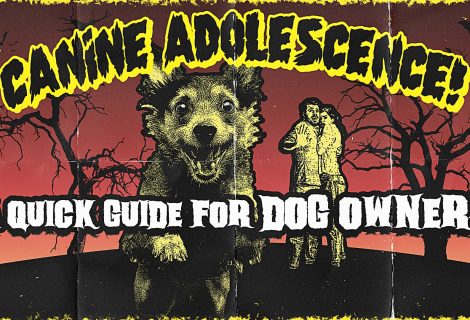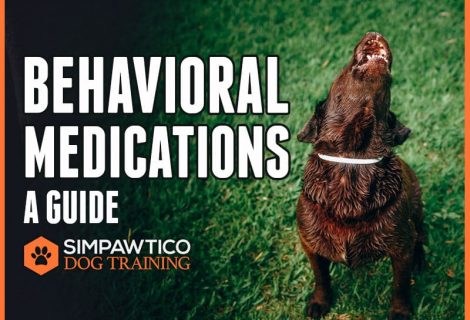What’s Your Training Style?
For this we'll quote trainer Ruth Crisler who said:
I’m not big on labels, especially empty ones. Tags like positive or balanced don’t signify much, in my opinion, beyond the public image a trainer wishes to project. These are marketing terms, not definable training methods. Yet all of dogdom seems to have settled into the opinion that every trainer is either one or the other.Our style is science-based with heart. We are all educated, experienced trainers, and Simpawtico as an organization adheres to both LIMA (Least Intrusive, Minimally Aversive) and The Humane Hierarchy. We advocate for an Authoritative style of pet ownership where we offer tons of nurturing love, support, and responsiveness along with reasonable and clearly defined boundaries, limitations, and expectations. Leaders, after all, demonstrate that they're looking out for those in their charge, and not merely just wield authority. Simpawtico will apply the best technique in a given situation to create the most humane, healthy, and productive result we can. We also tend to work like Process Engineers, culling from many experiences, disciplines, and techniques to tailor-fit training to you and your dog. Want to know more? Watch our videos to see it in action.
What are Your Qualifications?
We believe in full professional education, certification, and experience. We get professionally accredited certifications, and we pursue continuing education. Please see our ABOUT page for individual info for each of our trainers.
What type of payment do you accept?
The whole enchilada:
- Cash, of course.
- Check; please make checks payable to Simpawtico Dog Training, LLC.
- Debit and all major Credit Cards accepted in person through Square.
- Apple Pay, Android Pay, and PayPal Mobile contactless transactions in person through Square.
- Secure registration and payment on the website with Debit/Credit Card or PayPal powered by WooCommerce and through Square, Stripe, and PayPal.
- We also accept Venmo.
What Are Your Cancellation and Refund Policies?
Please see the Policies page for in-depth info.
Do you work with aggression?
Yes, we do. Our Principal Trainer, Ian, is experienced and qualified to deal with several types of issues that fall under this category. He will offer you help with safety and management, behavior modification, resources and support, and ongoing development.
Aggression cases are a study of ONE. There are no cookie cutters or textbook approaches. Every single case requires careful examination and customized recommendations. A good trainer not only has the know-how with the dog, but also the consulting skills to help YOU tackle the issues and help your pooch.
Feel free to read up on Ian's bio HERE for info on his credentials.
What vaccinations are required for classes?
For puppies: first two rounds of DHPP, DHLPP, DAPPv, or similar. The second round must have been administered after 8 weeks of age, but at least 5 to 7 days prior to the first session of class. Feeling worried about infection? Read the open letter by Dr. R.K. Anderson, DVM for more info. You may also be interested in reading this Position Statement by the American Veterinary Association of Animal Behavior.
Also, watch our video on early Socialization for more info about this.
As many vets don't like to administer rabies until much later, we do not require proof of rabies for puppy classes.
For dogs older than 19 weeks: up-to-date DHPP, DHLPP, DAPPv, or similar, plus current rabies certificate required.
You can email your records, or have your vet do so. You can also bring your records with you to the first night of class.
How old does my puppy need to be to take classes?
This is a VERY IMPORTANT thing to consider. My first answer is this: START AS SOON AS POSSIBLE. Work at home, contact me for guidance, have Puppy Parties at home to begin your puppy's super-important socialization. You cannot mess around with this. The critical window for socialization is three months of age, the window for bite inhibition is 18 weeks to around five months, and the window to prevent adolescent problems starts closing at five to six months. If you don't get it right by then you may be able to train a good dog, but they will never be what they could have been. Behavior problems are the number one reason dogs are surrendered and/or returned. BUT they're all predictable and preventable.
Download and read the two free eBooks I have on the Puppy Class page and do every single thing that they tell you to do.
Due to vaccine scheduling and most vet recommendations the minimum age you'll be able to bring him or her into classes is 10 weeks. However, many recommendations by the world's leading authorities say you should start even sooner, vaccinations notwithstanding. Read this letter by Dr. R.K. Anderson, DVM for more info, and/or refer to this Position Statement by the American Veterinary Society of Animal Behavior.
Also, watch our video on early Socialization for more info about this.
In any event, at least the first round of vaccinations is necessary, although depending on your vet the schedule of these shots will be different. As long as you have documentation of vaccinations in progress, we can still work together. Consult your vet if you have any questions, and remember I do offer in-home training too.
Many breeders will let you take your new puppy home at eight weeks. That means you have some work to do at home before classes. Contact me if you have questions or need guidance, and schedule your puppy classes as soon as your schedule and your vet allow.
Keep in mind that there are crucial developmental deadlines in a puppy's early life. Implement a puppy program immediately, at home AND with your trainer.
Isn’t my dog too old for classes?
Nope. Note at all. That old adage that you can't teach an old dog new tricks is not true. It will take some time and patience. There will probably be some old habits we have to dismantle, but, it's doable. It has been done. We've done it many times, and you will too!
I’ve taken a training class elsewhere. Can I skip Basic and take Intermediate Class?
The short answer is, unfortunately, no. I've arranged the curriculum, so that level one classes (Puppy 1 or Basic Class) integrate seamlessly with level two classes (Puppy 2 or Intermediate). Together, they work like a 12-week "semester." We establish a common vocabulary, strategies, and techniques that progressively build on previous work. Coming in at the midpoint would be like sitting down cold turkey to a midterm exam in a class you hadn't taken the first half of. The professor may be talking about something, and everyone else is nodding and smiling, and you're like, "Uhmmm...what?"
We believe that if you're interested in training with Simpawtico, you start with Basic, even if you've taken a class before. Keep this in mind: not all training starts and ends at the same spot. PetSmart's training and Petco's training will be different than mine. The trainer across town will do things differently than me. Get on the boat at the dock; don't try to swim out to meet it.
Do I bring my dog with me to the CPR/First Aid class?
Nope. This one's for the humans. The PetSaver™ class is an approximately 8-hour workshop (or 5-ish if you take the shorter CPR/First Aid workshop) and we provide stuffed demo dogs for you to practice skills on. Your dog would a) be bored as heck, and b) probably not appreciate being used as a practice dummy!
Can I bring my husband with me to classes? My Wife? Kids? Roommate?
Absolutely. The price of admission is for the dog; you can bring (almost) as many humans as you like. Listen: everyone in the house needs to be on the same page, issuing the same cues, and having the same expectations. I encourage everyone in the house to participate. Having said that, I do recommend that very young children be left at home during group classes, or otherwise occupied during in-home private sessions.
Do you do clicker training?
We do not, typically. Let us elaborate:
On the one hand, clicker training is great! Clicker training is marker-based training which is the most efficient way to train any animal with a nervous system (humans included, actually). Dogs specifically learn about five times faster with a clicker. It has the potential to make even difficult training situations suddenly move along pretty quickly. Dogs not only tend to learn amazingly fast with it, but the teaching sticks in their brain harder too. Awesome! Why wouldn't we use it for everyone?!
Because clickers just don't fit into our system. With the average pet-owner (i.e. not a technically savvy trainer) there's about a 50% failure rate for one reason or another. People use it incorrectly, over-click with it, forget it, misplace it, etc. Moreover, we use our hands a lot and the clicker gets in the way.
However, the Simpawtico system still uses marker-based training, but we use our voices and work to be as consistent and timely as possible. Additionally, we can use our tone and volume to add more analog information which is impossible with a clicker. Then, when folks are more experienced, are moving into advanced training and are hungry for more, THEN they're ready to sit at the big kid table and may then choose to use a clicker for initial skill acquisition. Those are the students that will put it to best use, too.
FYI—Here's an article about how using verbal markers is just as effective as a clicker.
Are you ready to start training with SIMPAWTICO?
Contact Info
Welcome to Simpawtico Dog Training! We're glad to have you around. If you need to contact us, use the details below.
- 62 Main St, Big Flats, NY 14814
- simpawtico.team@simpawtico-training.com

Training Term of the Day
Functional Rewards
Used specifically in the treatment of arousal, reactivity, and aggression, Functional Rewards use the function of the behavior we DO NOT want as the reward for the alternate behavior we DO want, e.g. gaining distance from a trigger as a reward for engagement rather than reactivity. There are...
Recent Blog Posts
Canine Adolescence: A Quick Guide for Dog Owners
October 25, 2024
Behavior Medications for Dogs: A Guide
June 30, 2023



